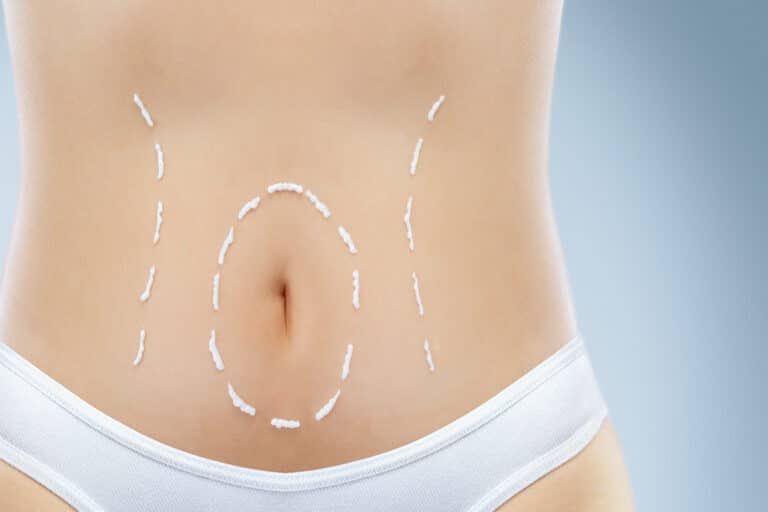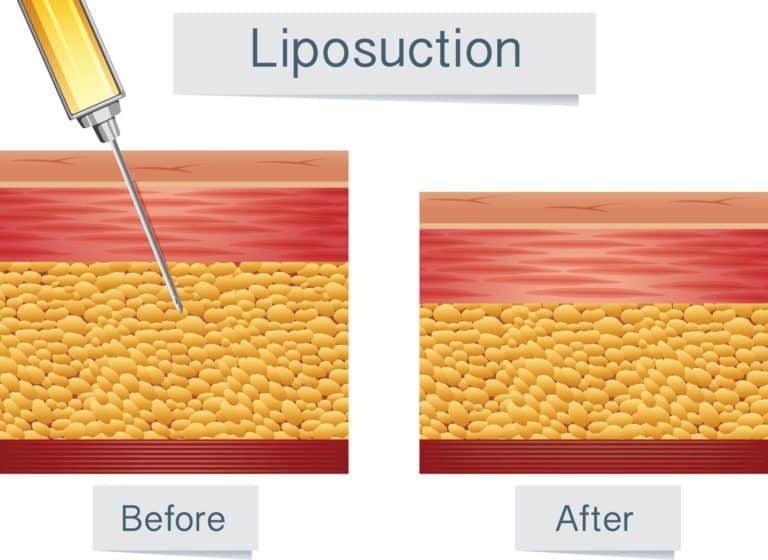Laser Liposuction: Is It Worth It for Fat Loss?
There are so many things that you can finish in the course of a single lunch break. You can walk your dog, get some groceries, run a few errands — and now, you can even get laser liposuction!
Also known as smart liposuction, laser liposuction is one of the more recent fat removal procedures in the market. After its debut over a decade ago, its popularity immediately skyrocketed because of its reputation as a quick fat-zipping procedure that can be performed during your lunch break, hence earning its moniker as “lunchtime lipo.”
Despite this, laser liposuction has a hit-and-miss track record when it comes to overall effectiveness.
If you’re curious about whether laser liposuction is for you, continue reading the rest of this post.
What is Laser Liposuction?
Laser liposuction is a procedure that uses a laser beam emitted through a thin fiber-optic cannula to rupture fat cell membranes, thus dissolving fatty tissues. It also tightens the overlying skin as a bonus.
Since the size of the fiber-optic cannula is so thin, laser lipo is best used to remove small fat pockets from areas resistant to diet and exercise.
That is why it is only recommended for removing small fat deposits in the face, neck, and arms, and is practically useless for moderate to major fat removal and body sculpting. And since the cannula is so thin, it takes much longer to treat an area with this application.
Unlike other liposuction procedures, smart liposuction does not need incisions to suction out the liquefied fat. That is because once the fat cells are liquefied, they are naturally removed from your body through your liver and white blood cells.
It might take 6-8 weeks for the final results to show up, as this period allows your body to metabolize and gradually remove the liquefied subcutaneous fat naturally.
Because it can only destroy a small amount of fat at a time, you might need to undergo multiple sessions every four months.
What are the Pros and Cons of Laser Liposuction?
| Advantages of Laser Liposuction | Disadvantages of Laser Liposuction |
| Since the treatment area is small, local anesthesia is enough to dull sensation; no need for general anesthesia Minimizes bleeding and bruising as it coagulates the loose ends of small blood vesselsLess swellingCan be performed within 30 to 60 minutesNo incisions needed to suck fat out, so it’s minimally invasiveFaster recovery time | New and mostly untestedNot recommended for removal of large fat depositsGenerally more expensive than one-time tumescent or ultrasonic liposuctionCosts tend to pile up because it can only be used for removing small fat deposits at a time, so you might need multiple sessionsInstruments used are too small for large-scale fat removal in the thighs, hips, or bellyTakes longer to perform Takes 6-8 weeks to see results |
How is Laser Liposuction Performed?
Here is the step-by-step process of laser liposuction.
- Your plastic surgeon numbs the target areas with local anesthesia.
- The surgeon passes a tiny cannula measuring 1-2 mm in diameter into the skin. Its tip houses the laser fiber, which disintegrates the fat cells as it comes in contact with. He moves the cannula back and forth so that it hits as much subcutaneous fat as possible.
- The fat cells then disintegrate into a mucus-like liquid, which will be gradually absorbed by your white blood cells and metabolized by your liver. It will then be removed by your body’s natural waste elimination cycle in the next 6-8 weeks.
Because it is only used for damaging small, localized fat deposits, smart liposuction is often performed inside the doctor’s office or clinic.
While it is generally a painless procedure, expect throbbing and subcutaneous level aches and twinges once the anesthesia wears off.
Why Dr. Agha Does Not Perform Laser Liposuction
Despite the massive marketing of laser lipo devices, Dr. Siamak Agha and many other board-certified plastic surgeons in Orange County do not recommend laser lipo due to the following reasons:
- Most patients require larger liposuction treatments of one or more areas, making lunchtime liposuction impractical because it can only do small-scale lipo.
- It is also not cost-effective in the long run when it comes to large-scale fat removal.
- Laser lipo damages and liquefies fat absorbed and excreted by our bodies. The results take up to eight weeks to be seen. On the other hand, tumescent liposuction removes fat and the results are instantaneous.
- Since it takes weeks to see the results, the laser lipo effect is not seen on the operating room table. Unless the laser fiber is perfectly and uniformly moved through the fat, the initial outcome is the appearance of contour irregularities as areas of over-treated fat can be seen next to areas of under-treated fat.
- Dr. Agha has been consulted by patients who have experienced contour irregularities and skin burn as a result of laser lipo.
- Dr. Agha does not advocate the marketing of “lunchtime” surgeries as the speed of doing one can compromise the safety and aesthetic results of a particular surgery. He takes every operation seriously and makes safety his number one goal. There is no rush to complete a liposuction procedure within 1-2 hours. Plastic surgery is an art that demands attention to detail, so the results should never be jeopardized for marketing purposes.
- The result of laser lipo is so limited that even non-invasive fat reduction techniques such as CoolSculpting are more superior, efficient, lasting, affordable, and most importantly, safe.
With all these laser liposuction drawbacks, it might be best if you explore all your liposuction choices first before coming up with a decision.
If you are interested in getting liposuction, check out your options in this page.







